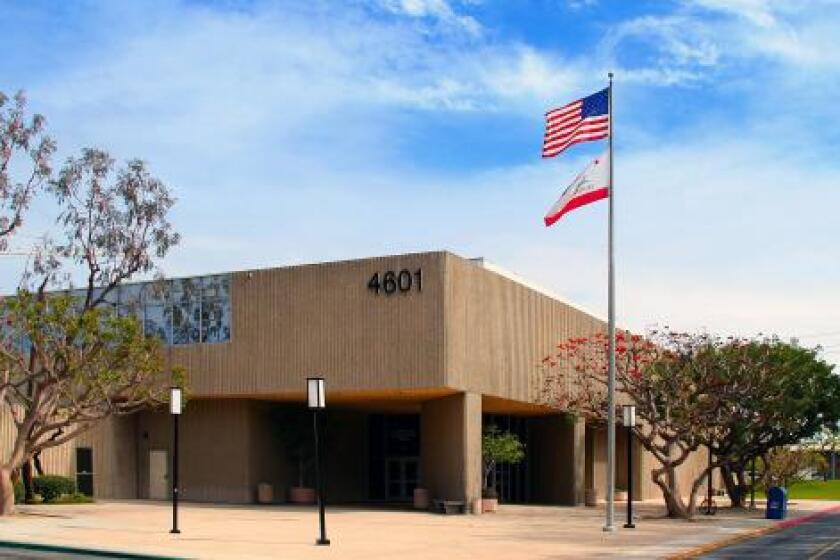SOUNDING OFF:
- Share via
To have or not to have a pedestrian mall on Main Street?
As a concerned Huntington Beach resident and patron of downtown shops and restaurants, and as a resident within walking distance of the pier and Main Street, I am a proponent of enhancing and improving this downtown experience. As a California licensed landscape architect whose final thesis project at UC Davis discussed pedestrian-only thoroughfares and transportation issues for parts of the city of Berkeley, I might have more than a fleeting perspective of whether a street closure mall on Main Street is a viable solution for us.
Opinions, comments, facts and fiction abound concerning this local topic. Like many, I have enjoyed and appreciated the Third Street Promenade in Santa Monica. However, I am also aware of failed projects where much time, effort and money is now being used to reopen closed roadways.
In the 1970s, cities jumped on the “closed-streets-pedestrian-mall” bus like it was going to pass them by. Proper studies were not done for many projects, which have resulted in blighted or deteriorating downtowns. Many of the hundreds of pedestrian malls of that era and prior have since failed. Some of them include 14th Street Mall, St. Louis; Franklin Street Mall, Tampa; and, touted as the first pedestrian mall in the country in 1959, Kalamazoo Mall, Mich.
As well, there have been some success stories. They include Pearl Street Mall, Boulder, Colo.; 16th Street Mall, Denver; Third Street Promenade, Santa Monica; and State Street Mall, Madison, Wis.
When researching success of pedestrian malls, one invariably ends up reading of something in Europe (Essen, Bonn, Cologne, Hamburg, Copenhagen and London).
European tradition and culture embrace a historical design vernacular that generally excluded or minimized vehicles. We are not Europe. We do not have the history and infrastructure that de-emphasizes the automobile. We would need to address shortcomings here. For us to mimic design success, we need to be fully cognizant of expected user behavior versus realistic behavior based upon our national and local culture, attitude and impressions, and existing structure/design.
Design is not a stand-alone element of attraction, and the time-weary phrase “form follows function” applies here. Function includes: what do people really want to do, what will they do, where will they walk and shop. The bucolic street experience that people may envision will not happen through forced features and design.
Instead of pushing through a concept that sounds good superficially, has anyone generated a list of the issues we “think” a pedestrian mall would solve, or experiences we think are lacking?
Perhaps this mall idea is not the way to solve them. Perhaps the same effort and money could be applied differently more efficiently. What about Huntington Beach’s citizens and merchants?
Downtown’s shop owners and restaurateurs, especially, need to fully supportive of any initiative to move forward with this concept. So far, they have voiced their concerns, and I have yet to see the concerns fully addressed. How can you assure them their revenues will increase through this change? Trial closure has been bandied about like it would solve everything and prove something. The only true test of success of such a mall would be if someone could compare participation levels, visitors, and spending habits of patrons on both a “nonclosed” day, and the same day (climate, season, etc.) but “fully built-out.” This is impossible. To those who think a temporary bollard closure will immediately change usage patterns (read: spending/visiting), I say you may be very disappointed in the results. How much money would be required to actually improve the experience, even temporarily? What should the measurements of success be, and who is going to do this analysis objectively?
When the pros and cons and history are understood, and still a majority of local merchants, citizens and politicians embrace the thought of moving forward, then the next undertaking is to work on the basic elements that are required for success and what we are lacking. This is not a one-step project. Moving forward with such a proposal needs to be viewed as a long-term commitment involving money, time, phased construction, re-evaluation and ongoing monitoring.
The promise up-front needs to be one to make this succeed.
Some consistent elements in successful pedestrian malls include:
Common trends in the failed malls include:
To have or not to have a pedestrian mall? The answer to the initial question is simply not easy. A decision will be made to either move forward or not in designing a street-closure mall.
Let’s hope the decision is fully researched, both from a design and financial standpoint, and that everyone is cognizant of both best- and worst-case scenarios, with contingency plans in place on all fronts.
All the latest on Orange County from Orange County.
Get our free TimesOC newsletter.
You may occasionally receive promotional content from the Daily Pilot.



